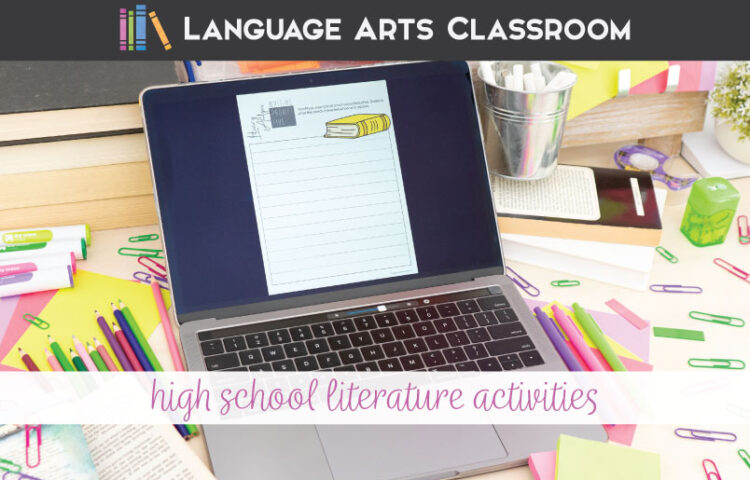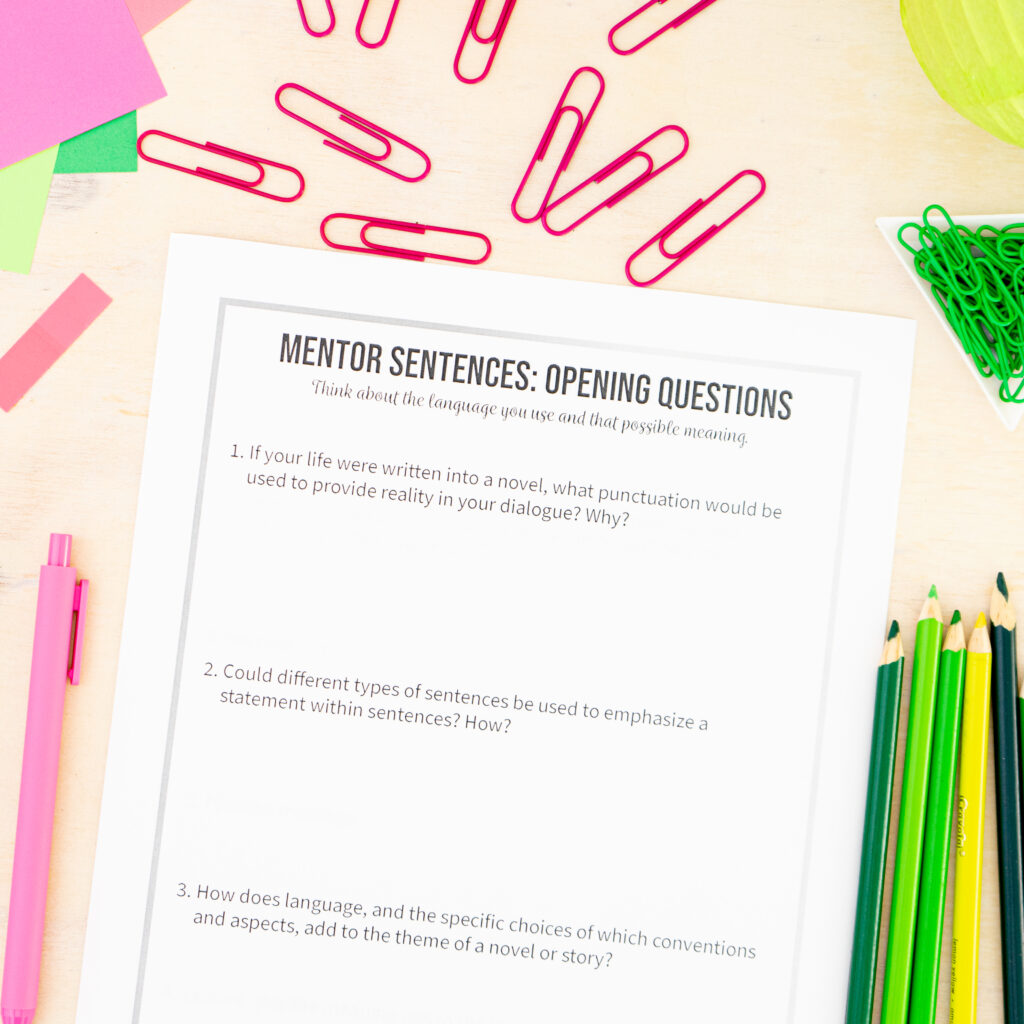High school literature assignments should have meaning. Now, we all know that teaching high school literature is important, but how can we accomplish heavy tasks?
Loving literature probably made you want to teach language arts. We remember a book saving our lives, a story carrying us through a difficult time, a specific line resonating with us. Whatever attracted us to becoming English teachers, literature likely played a role.
Teaching high school literature require more than a teacher showing love of literature or completing a fun activity or two—even though those acts can be part of your community. Still, literature lessons can be difficult to craft.
Toss in high school literature standards (which are incredibly difficult!), and you might feel overwhelmed. Some school years, I have printed off the standards, brainstormed ideas for meeting them, and re-read the literature pieces. I have taught for twenty years, and I still find myself overwhelmed with balancing the components literature lessons require from me, still find myself reworking pieces.
So, I understand.
In this post, I aim to cover how high school literature assignments can have meaning for students while meeting standards and not creating piles of writing for teachers. Below, I cover literature standards, student interest, and our work loads.

Literature Standards.
The literature standards depend on prior knowledge and domain-specific language. Plus, to meet them, students must invest in them which often means we must show students why they should care.
When I’m teaching high school literature, I might try to tackle this standard: Analyze how complex characters (e.g., those with multiple or conflicting motivations) develop over the course of a text, interact with other characters, and advance the plot or develop the theme. So for example, I would acknowledge. . .
That standard has a lot of moving parts. Students need to understand complex character and be able to explain what defines a complex character and the pieces that build a character as complex. We might discuss the motivations from beginning to end of a story. Then, we would look at how a particular character interacts with other literary devices (such as the plot and theme).
Lots! When begin working on applying this standard with a literature piece, I find myself following a pattern. Here are ideas that better my high school literature assignments:
- Put the standards and your explanation of the standard on every assignment. When I have the standard on the assignment, students and parents can see what concept we are working toward. The visual is also a reminder for me to talk about the standard throughout the assignment.
- Make a basic chart to begin. Break down each component of the standard. For instance here, I would have a column for “characters,” one for “dialogue,” one for “motivations,” and one for “summary.” Each teacher has a different method, but to me, the idea of a starting place would be angles to help students consider complexity. As we completed those columns, I would purposefully show connections between our discoveries.
- Build off activities. The next step could narrow down the complexity to a certain angle. If students struggle, present another “first step” breakdown for them.
The more you work with literature standards, the more your high school literature assignments will build off each other.
Student Interest with Literature.
Previously, I have written about ideas that help me to connect with students which then enables me to help students see connections of literature to their own lives. Here are some ways I build student interest with literature:
- Essential questions with literature help me to engage students. Since each student will bring individual life experiences to a story, essential questions provide guidance and reassurance that students are relating to the material.
- Literature circles and independent reading allow students to choose their own book. Plus, students get to explore new genres. For instance, when I run dystopian literature circles, we start with an introduction to the genre which builds community around a common understanding. Then, we work on individual book studies. The questions I develop, however, can work with any dystopian book.
- Finally, I build a literacy-based community around engagement in my classroom library. To do so, I actively put books on display and in the hands of students. I also rotate books, talk about books, and model reading for students.
The standards ask us to dig deep with literature. Part of getting students to do such work requires that students invest in the reading material.
Teacher Work Load.
I am a real teacher, not an educational consultant or “expert” watching from another room. When I am on social media or my blog, my perspective may not always be the trendy or upbeat because I teach every day in a real classroom. And English teachers have too much to grade.
Do not grade every piece of student work that your students complete. Give feedback in other ways:
- You can provide verbal feedback and ask students to jot down three ideas that you gave them. Then, they can reflect on those ideas later.
- Students can write several literary analysis responses. After they finish them, students should choose their best one, edit and revise their writing, and submit one for grading.
- In small groups, you can ask students to look for evidence that supports their analysis. The smaller groups help students to share more authentically.
- Another activity that helps students move toward analysis (and meeting standards) is for me to complete an activity (like the above chart I described) as a model for students. It might seem awkward at first, but I also verbalize my thought process—mistakes and all.
As we work on teaching high school literature, we can meet standards and provide meaning for students without increasing our work loads. As you develop high school literature assignments for your students, I hope these ideas inspired you.
All of the above activities are in my high school literature bundle:


